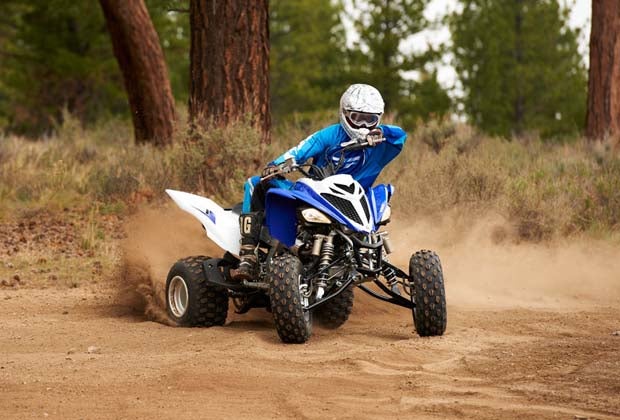
Many OEMs have pulled away from the sport ATV market in recent years, choosing instead to focus their efforts on the explosive growth of utility and sport-minded UTVs. Unfortunately for us sport ATV junkies, that means fewer models to choose from and even fewer updates to those quads that remain in production.
Despite the economic climate and the current shift to the UTV market, one OEM that is fighting the trend and working tirelessly to maintain their position as the #1 brand of sport ATVs on the market is Yamaha. Already boasting the largest line of sport ATVs in production, Yamaha isn’t just sitting back and basking in its success.
We saw significant changes back in 2009 with the release of the YFZ450R by way of a new frame, fuel injection and a host of other upgrades, only to then improve upon the original YFZ450 in 2012 to offer a low-cost, high-performance option to the consumer.

Like the YFZ, the Yamaha Raptor received a much-needed overhaul in 2006, silencing critics and providing a well-balanced platform for what remains as the most successful big-bore ATV in production. And they didn’t stop there.
However, before Yamaha starts making changes to a model, they do a great deal of market research and find out exactly what the consumers want most out of that particular ATV.
Give Them What They Want
Upon our arrival at the luxurious Oxford hotel in Bend Oregon for the 2013 Yamaha Raptor 700 intro, several Yamaha representatives gave a presentation on not only the key features of this new machine but on the demographics of its users. Yamaha does an incredible amount of research on the individual buyers of its machines so it can better understand what its customers want and meet the needs of different users.
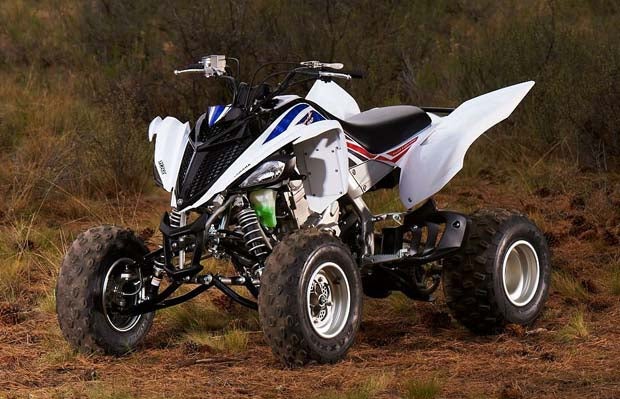
For starters, the typical YFZ user is younger and more interested in performance. Racing technology and fuel injection win out over price and model reputation, as these users are more prone to make modifications that suit their needs and individual riding styles. They’re willing to sacrifice a bit of rider comfort if it means a more performance.
Fans of the Raptor are usually a bit older (late 30s) and have significantly more riding experience. These users are typically interested in a machine’s reliability, reputation and price over high performance. That is not meant to say in any way that Raptor users don’t like speed or great handling; it simply shows that the wants and needs of these two demographics of users can be very different.
Yamaha takes all of this information to the drawing board to make changes and improvements on existing machines in an attempt to meet the varying demands of the consumer.
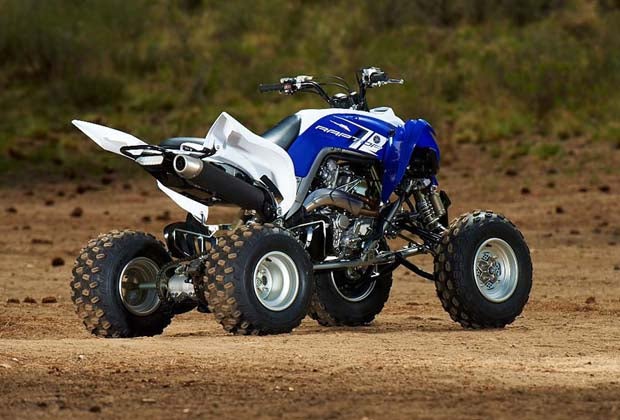
What’s New?
With reputation and price leading the way for many Raptor users, Yamaha made it a point to offer the same quality and performance that has made the Raptor so legendary, while lowering the price to make the machine more affordable.
The result is three different models, the 700, 700R and 700SE, each with new features from the 2012 model and every one with a lower price tag than the year before.
For starters, you’ll notice immediately that the 2013 Raptor has an aggressive new look. Engineers changed not only the look of the front hood but also the position of the front fenders, moving them about 50mm forward to improve rider comfort. All three models also received an upgrade in the braking department, now featuring the same dual-piston rear brake caliper as the YFZ450.
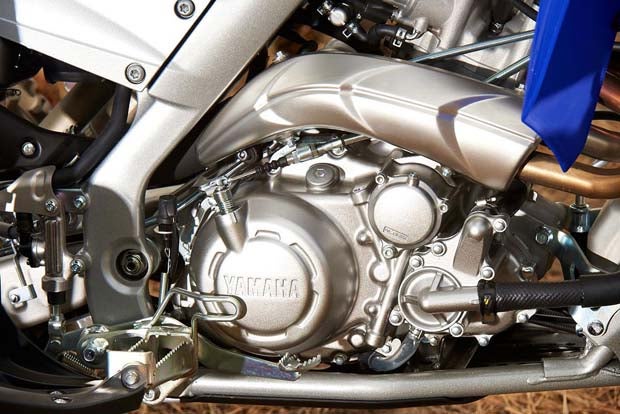
Yamaha also upgraded the tires on the 2013 Raptor 700. The new Maxxis tires were designed specifically for Yamaha and provide increased traction while still enabling you to break the rear end loose and slide around turns.
One of the biggest features of the 2006 overhaul to the Raptor was a completely redesigned hybrid steel and aluminum frame. The frame mates a steel front frame with a cast aluminum rear and subframe. This combination offers the right combination of rigidity and flex to make sure you don’t feel like you’re riding a board, and Yamaha made no changes to the frame for this new 2013 Raptor 700. There were also no changes to the 686cc engine, as it has proven itself a dependable and worthy competitor in the big-bore sport ATV class.
In terms of cost cutting, this is where Yamaha started getting specific with each of the individual models. To begin with, they completely did away with the digital meter on all three quads. While this is a nice feature it falls more in the luxury category and has next to nothing to do with performance. Doing away with the digital meter immediately dropped the cost on all three models.
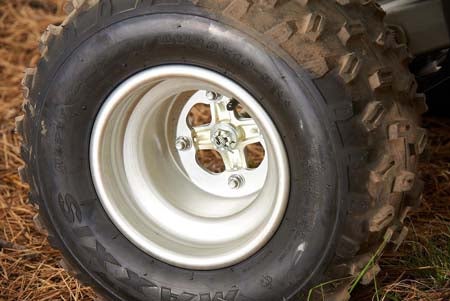
For the base 700 model, Yamaha kept things simple with a non-piggyback front shock. While these shocks offer no compression or rebound adjustability, they still allow you some preload adjustment and work well under a variety of conditions. The 700 also uses a solid front brake lever as opposed to the adjustable one found on last year’s model. Yamaha found that by making these simple changes they could drop the price by nearly $700. The Raptor 700 is available with two graphic schemes: a more edgy skull pattern and a very patriotic red, white and blue pattern commemorating the fact this unit is now assembled in the U.S. Following the Grizzly 4x4 and the complete line of side by sides, the Raptor 700 is the first sport ATV from Yamaha to be assembled entirely in the United States.
The 700R and 700SE models are virtually identical to each other with the exception of a few extra goodies on the SE. Both retained the fully adjustable piggyback front shocks as well as the adjustable front brake lever. Yamaha did away with the wave rear brake rotor on the SE model although the GYTR grab bar and heel guards stayed put for 2013.
The Ride
We tested the 2013 Raptor 700 at the East Fort Rock OHV area in beautiful central Oregon. The area boasts over 300 miles of trails ranging from wide-open, Baja-like conditions to tight and winding trails that reach up to 6,400 feet in elevation.
One of our riders had ridden the area before and was a little skeptical about testing a big-bore ATV in an area known for its tight and wooded trails; however, all doubts vanished just about as quickly as he took off down the trail. As it turns out, the Raptor 700 is quite at home on the trails and the big-bore power was manageable as well as usable everywhere we went. He mentioned over and over feeling like he was riding a slightly heavier 450. With the extra horsepower of the big-bore engine, the added weight is almost unnoticeable.
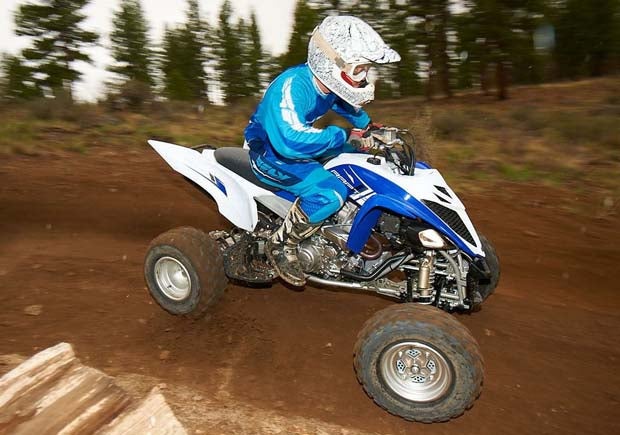
One thing that makes the Raptor such a great trail machine is that you could simply select one gear and go. With a little feathering of the clutch, you can lug the machine into or out of almost any corner without having to shift gears. The power is smooth and consistent and there is plenty of it!
The five-speed variable transmission shifts smoothly and clutch pull is a cinch. We actually rode with just one finger on both the clutch and front break levers all day.
Speaking of brakes, the Raptor 700 comes to a controlled halt in a hurry. We found plenty of opportunities to test the brakes out, as seemingly every straightway ended with a sharp turn that darted back into the woods with little to no warning. The dual-piston calipers up front and the addition of the new dual piston in the rear made braking effortless.
One of the first things we notice were the all new Maxxis tires. While most stock tires fit in the “sufficient” category, we found the Maxxis treads to hook up extremely well despite the snow flurries that moved in toward the end of the day. While it didn’t exactly make for pleasant riding conditions it allowed us to test the tires in both dry, loose dirt as well as wet, muddy conditions as the day wore on. The tires had plenty of traction no matter what the conditions.
Fit and finish was great and taller riders will feel very at home on the Raptor. At 6’ 2”, our test rider said he often feels cramped on 450 models but that the Raptor 700 was quite comfortable. This was due in part to the new fender placement as well.
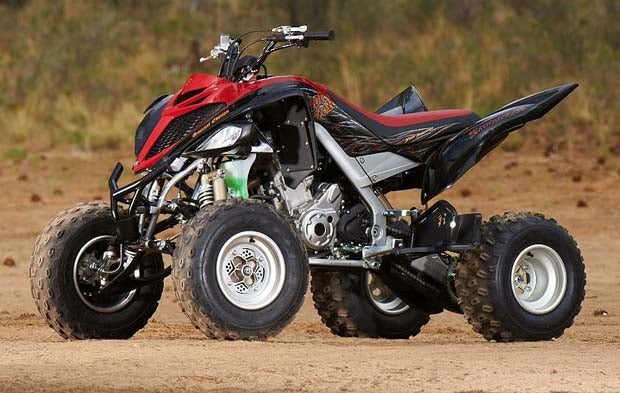
For our test model we used the 700R version, which retained the use of the piggyback fully adjustable front shocks. Suspension is something that definitely needs to be dialed in to suit an individual riders preference and riding style, but even on the stock settings, we had no complaints. The shocks performed well through whoops and rocks and soaked up the smaller stuff on the high-speed sections where we could really open it up.
Our overall impression is that Yamaha has successfully done what so few can: improve upon an already excellent ATV, all while making it more affordable to the end user. The Raptor 700 stands as a fan favorite in Yamaha’s lineup and remains a dominating force in the sport ATV category. The light handling makes it great for the trails or the dunes, and the big-bore engine will climb anything you put in front of it.
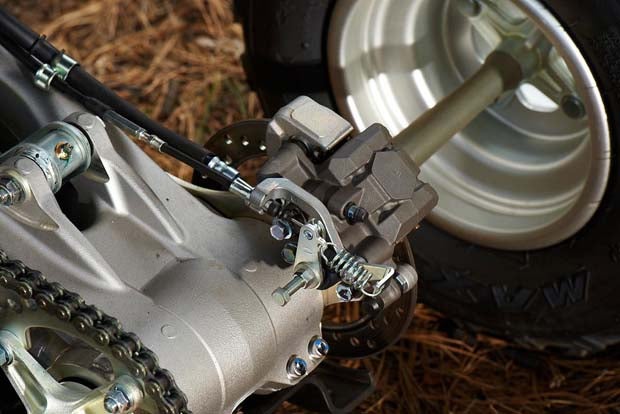
We really can’t emphasize the price point enough, as Yamaha has worked tirelessly to maintain the high level of performance while saving the end user money. By making a few changes and offering three different models to accommodate varying needs and budgets, they are able to offer a big-bore ATV to a wider range of users.
And if you’re not satisfied with the Raptor 700 in stock trim, Yamaha has over 100 Genuine Yamaha Racing Technology (GYTR) accessories to help you improve the performance and the look of your machine. Check out the full line of GYTR accessories, as well as the new 2013 Yamaha Raptor 700, 700R and 700SE, at Yamaha-Motor.com.


 Your Privacy Choices
Your Privacy Choices